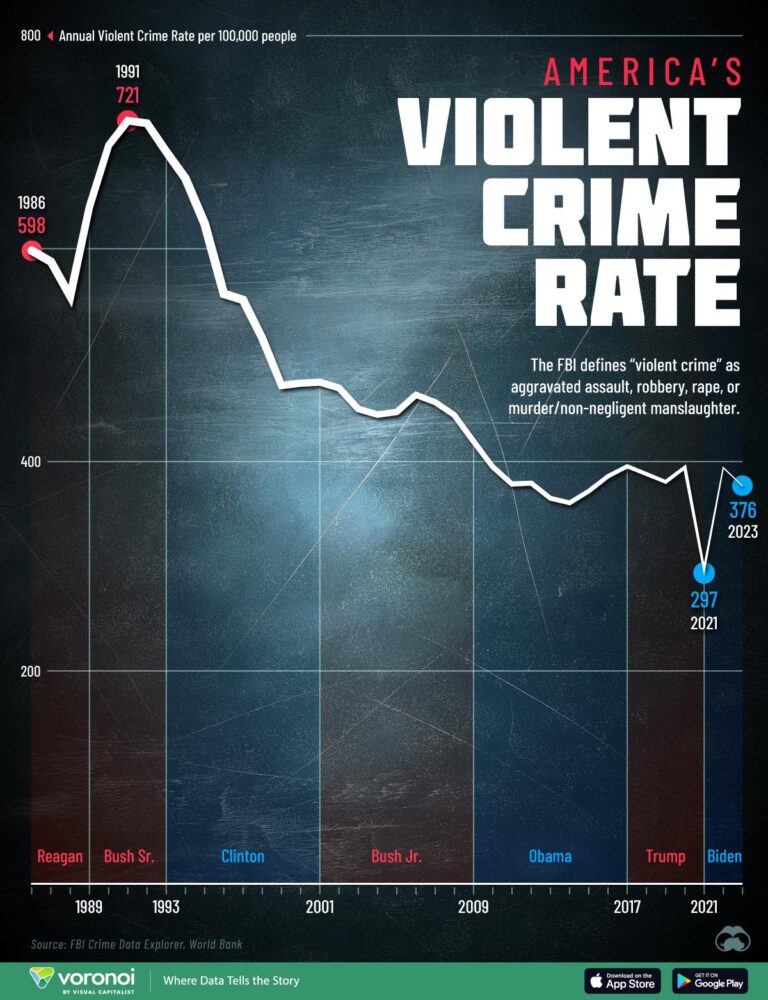Evolution of Crime Patterns and Policing Strategies in the United States: A Modern Analysis
Emerging Trends in Crime Across the U.S.: A Fresh Examination
Crime in the United States is undergoing significant transformation, defying many long-held assumptions about criminal behavior. Recent statistics reveal a consistent downturn in violent crimes in many urban centers; however, offenses such as cybercrime, hate-related incidents, and domestic abuse have surged considerably. These developments are largely influenced by rapid advancements in technology and shifting social landscapes, prompting law enforcement agencies to innovate and adapt their approaches.
Key drivers behind these evolving crime trends include:
- The widespread adoption of digital connectivity, which has led to a dramatic increase in cyber intrusions and the proliferation of illegal online trade.
- Heightened political polarization contributing to a rise in ideologically motivated offenses.
- Ongoing repercussions from the COVID-19 pandemic, affecting mental health and family stability.
Simultaneously, policing techniques are shifting towards integrating technology with community engagement to enhance effectiveness while maintaining public trust. Agencies are increasingly leveraging tools like predictive analytics and sophisticated surveillance to optimize resource deployment, though these advancements raise important questions about privacy and civil rights.
Below is a comparative overview of crime category fluctuations from 2019 to 2023:
| Type of Crime | Percentage Change |
|---|---|
| Violent Offenses | -12% |
| Cyber Offenses | +38% |
| Hate-Motivated Crimes | +24% |
| Domestic Abuse | +17% |
| Property Crimes | -8% |
Modern Policing Models: Assessing Their Impact on Crime and Community Relations
Law enforcement agencies nationwide have adopted diverse policing frameworks, each producing varied results in crime mitigation and public sentiment. Community-centric policing has generally improved rapport between officers and residents, fostering collaboration. Conversely, aggressive enforcement tactics may yield immediate crime reductions but often exacerbate distrust and friction within communities. Policymakers and police leaders continue to grapple with balancing effective law enforcement and protecting civil liberties.
Essential elements shaping the effectiveness of contemporary policing include:
- Deploying officers based on crime data analytics to target high-risk neighborhoods efficiently.
- Integrating cutting-edge technology such as AI-powered crime forecasting and body cameras.
- Enhancing training programs focused on de-escalation techniques and reducing unconscious bias.
- Collaborating with community organizations and social services to tackle underlying causes of criminal behavior.
The table below outlines the outcomes and community perceptions associated with key policing strategies:
| Policing Strategy | Effectiveness in Crime Reduction | Community Response |
|---|---|---|
| Community-Based Policing | Moderate Decrease in Crime | Improved Public Trust |
| Targeted Hotspot Policing | Notable Crime Reduction | Varied Community Opinions |
| Zero-Tolerance Enforcement | Short-Term Crime Decline | Increased Community Tension |
Challenges Facing Contemporary Law Enforcement Agencies
Police departments across the nation confront a complex set of obstacles shaped by societal demands and operational pressures. The uptick in violent crimes coincides with calls for reform and heightened accountability. Officers must enforce laws while fostering community trust, all under intense scrutiny regarding use-of-force incidents and transparency. Successfully navigating this landscape requires innovative leadership and flexible strategies.
Major hurdles impacting policing today include:
- Recruitment and retention difficulties amid changing job expectations and public perceptions.
- Incorporating advanced technologies and data-driven policing methods effectively.
- Addressing mental health challenges affecting both officers and the communities they serve.
- Responding to the rapid escalation of cybercrime alongside traditional offenses.
- Maintaining transparency while safeguarding sensitive investigative information.
The following table highlights key issues, their impacts, and typical agency responses:
| Issue | Consequences | Agency Measures |
|---|---|---|
| Shortage of Qualified Officers | Delayed Emergency Responses | Improved Recruitment Incentives |
| Declining Public Trust | Reduced Community Cooperation | Expansion of Community Engagement Programs |
| Increase in Cybercrime | Complex, Time-Consuming Investigations | Formation of Dedicated Cybercrime Divisions |
Policy Recommendations and Strengthening Police-Community Partnerships
Effectively tackling the multifaceted crime challenges in the U.S. demands comprehensive reforms emphasizing transparency and accountability within law enforcement. Establishing independent oversight committees and mandating body camera usage can promote responsible policing and rebuild public confidence. Redirecting resources toward community-based initiatives that focus on prevention, rehabilitation, and social support rather than solely punitive actions is critical. Utilizing data analytics to pinpoint high-risk areas enables tailored interventions that reduce recidivism and enhance community relations.
Equally vital is fostering robust collaboration between police departments and local communities. Programs encouraging joint effortsŌĆösuch as neighborhood liaison roles, youth mentorship, and accessible mental health servicesŌĆöhelp nurture mutual respect and understanding. The table below showcases successful strategies proven to improve police-community engagement:
| Program | Results | Example in Practice |
|---|---|---|
| Neighborhood Engagement Policing | Improved Trust and Cooperation | ChicagoŌĆÖs CAPS Program |
| Youth Outreach Initiatives | Reduced Juvenile Crime Rates | Los AngelesŌĆÖ YouthSource Centers |
| Mental Health Crisis Intervention Teams | Fewer Violent Confrontations | SeattleŌĆÖs Crisis Response Unit |
Concluding Insights
Jeff AsherŌĆÖs comprehensive analysis on Substack offers a nuanced understanding of the shifting crime and policing environment in the United States. By blending up-to-date data with historical insights, his work sheds light on the complex challenges facing communities and law enforcement alike. As the nation pursues effective solutions, such informed perspectives are crucial for shaping policies that promote safer, more resilient neighborhoods.




